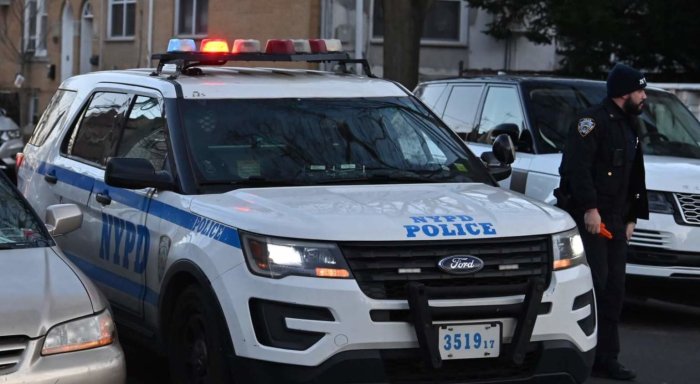By Chris Fuchs
Down in the sweltering basement of Queens Academy in Flushing Friday, Franklin Pemberton was nervously searching for his broom. He was watching some elected officials, including the Queens borough president and the governor, shovel coal into the last coal-burning furnace in the borough’s public schools.
They were doing it all wrong and making a big mess.
It did not matter much, however, since this would be the last time that anyone, including Pemberton, 53, would feed coal to the last furnace.
As part of a $125 million statewide project, financed by the Clean Water/Clean Air Bond Act of 1996, all but one of the 353 coal-burning furnaces in the city’s public schools have been replaced by natural-gas boilers. Queens Academy, a 104-year-old quaint school on 35th Avenue near Union Street, was the last in the borough to phase out its furnace.
“As we throw the last coal-fired furnace on the ash heap of history, we mark a significant milestone in our efforts to provide our children with a cleaner, safer, and more secure learning environment,” Gov. George Pataki told a news conference attended by a dozen students.
The move to replace the furnaces was spurred in large measure by concerns over the air quality in city schools, especially of those in Queens.
Since 1996 some 350,000 tons of coal have been burned in the schools, releasing noxious chemicals like sulfur dioxide and other particulates. But the conversion to natural gas boilers, for which the city received $523 million, has virtually eliminated the harmful fumes, the governor said. Only one other school, PS 151 in Manhattan, is to have its furnace replaced by the end of this year.
About a dozen city and elected officials, including state legislators from northern Queens and the schools chancellor, attended the news conference at Queens Academy, which was held in a classroom on the first floor. Though many of the officials centered their remarks on the removal of the coal-furnaces, some intertwined them with issues like the high incidence of asthma in Queens, school overcrowding and the need for increased funding in education.
“There are a lot of air quality problems in the borough,” said Queens Borough President Claire Shulman. Childhood asthma is not as prevalent in northern Queens as in the southern and western parts of the borough.
In 1999, more than 2,500 children in Queens were hospitalized for asthma, according to the state Department of Health, with Jamaica reporting the highest rate in the borough. Estimates place the number of asthmatic children in Queens at 35,000, even though the borough has the second-lowest incidence of asthma in the city, according to the borough president.
Shulman also brought up the issue of school overcrowding, an unremitting boroughwide problem whose most viable solution has been to place trailers in the school yards of elementary and junior high schools. She said Queens does not have classroom space for some 30,000 students.
“As many seats as we create in Queens in September, that many kids will come in,” she said.
State Sen. Toby Ann Stavisky (D-Flushing), while applauding the removal of coal furnaces, used the ceremony to raise concerns over school funding, saying that more had to be done to guarantee that New York City schools receive parity with others.
“We still need to address the inequity in the school funding formula, make sure that teachers are adequately compensated, that each student has a licensed teacher,” the senator said.
Reach reporter Chris Fuchs by e-mail at Timesledgr@aol.com or call 229-0300, Ext. 156.


































